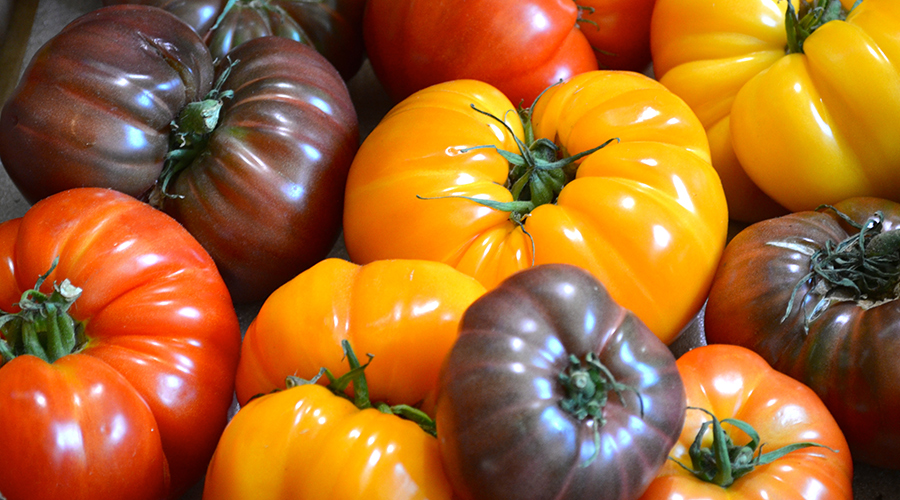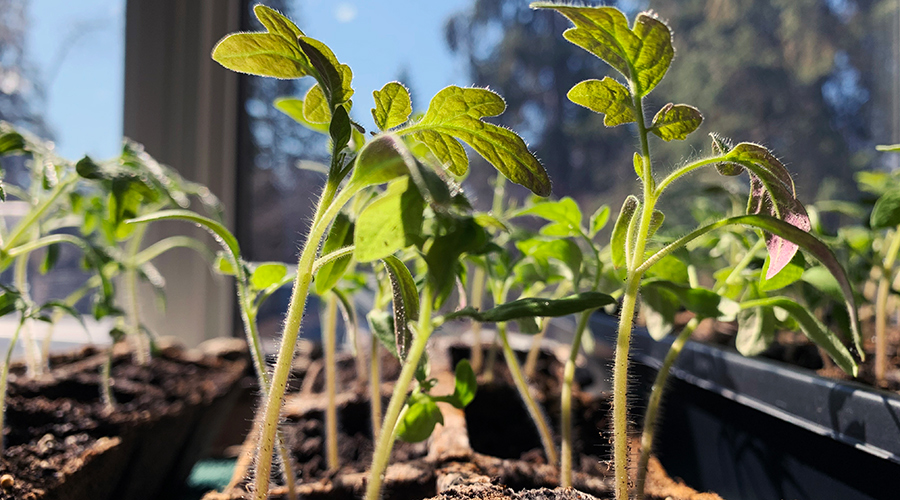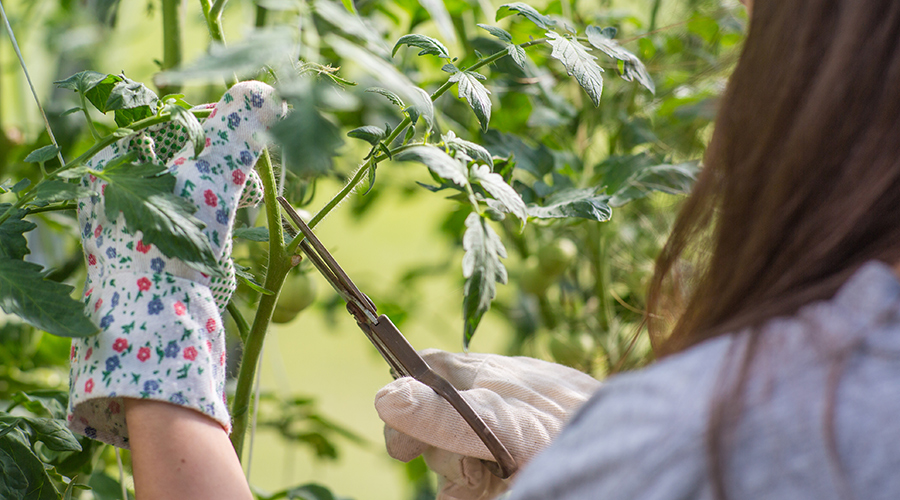Ensure a bounty of this culinary essential every year
 For Perry Michetti (Cooking ’90), a veteran chef and NAIT’s Culinary Arts and professional food studies department head, tomatoes are central to his craft.
For Perry Michetti (Cooking ’90), a veteran chef and NAIT’s Culinary Arts and professional food studies department head, tomatoes are central to his craft.
“Tomatoes are a pretty important item in the kitchen,” he says. “They serve so many purposes.” Pizza and pasta sauce are just a start, he points out; the fruit’s flavour and acidic properties make it essential to stews and soups.
But there’s a personal attachment, too. He remembers his mom roasting tomatoes and calling up the neighbours, who’d show up and eat them with nothing more than crusty bread and red wine. One variety he grows partly because of tradition: it has been a staple of his family’s gardens for about 75 years.
It’s no surprise then, that he grows a lot of them every year (about 15 plants, which can produce four to seven kilograms, or about 10 to 15 pounds, of fruit each).
Instead of asking the chef for his secrets from the kitchen (we have those in another story), we asked for those from the garden. Here are Michetti’s tips for ensuring a bounty, as well as great dishes and memories.
Pick your plants
Plant selection will depend on the palate, but Michetti advises experimentation, especially with heirloom varieties – those unusually shaped, unexpectedly coloured, extraordinarily flavoured old-world fruits. These, however, are his tried and true favourites, chosen to satisfy a variety of needs:

Super Fantastic – “It’s an absolute rock star in our climate,” says Michetti, who lives in the Edmonton area. It’s a large, meaty, sweet variety that works great for slicing or canning.
“It’s an absolute rock star in our climate.”
Manitoba – Call this early producer the Michetti family tomato, given that they’ve been growing it since it was released in the 1950s. It’s also meaty and good for fresh eating and preserves.
San Marzano – Michetti reverently refers to this Roma-style tomato as the “king of sauce.” It’s foundational to Italian food.
Tiny Tim – Instead of keeping a bowl of candy on the table, Michetti keeps a bowl of cherry tomatoes for the family to enjoy. The heirloom Tiny Tim produces hundreds of sweet, dark-red, one-inch fruits.
Start them early
For best results, Michetti (who’s been known to pull 20 pounds of fruit off a single plant) starts his tomatoes indoors from seed, usually around April 1. Find a sunny spot or, better yet, use a grow light, he advises.
“I try to aim for May long weekend to get them in the garden.”
“I try to aim for May long weekend to get them in the garden,” says Michetti. “I have had years when it is earlier and some years when it has been later than this, though.”
Watch the forecasts to make sure the risk of a hard frost is past.
Ensure lots of water and sunshine
Michetti plants his tomatoes in well-drained soil. Then he follows the advice of Lois Hole, the former farmer-turned-lieutenant-governor of Alberta. “What she always said was they like hot heads and wet feet,” says Michetti. Allow them to dry out slightly between waterings.

Fertilize plants regularly
“I fertilize once a week, all summer,” says Michetti. During the first two or three weeks, he uses a 10-52-10 formulation to promote root development. After that, he switches to 20-20-20 to support growth and fruit development.
“I fertilize once a week, all summer.”
Prune them or lose them
Tomato plants produce suckers – shoots that emerge from between the stem and the branches. These can reduce fruit production.
“Every time one of those little shoots come out between the branch and the stem, you have to pick it out, or else your tomato plant will spend a tremendous amount of energy growing that when it doesn't need to be there,” says Michetti. That means less energy and nutrients going into actual tomatoes.
Dwarf varieties, such as Tiny Tim, don’t require pruning. Most others, however, like Michetti’s cherished Manitoba, perform well when trained into a single stem.

Protect them from the cold
During the early and later parts of the growing season, keep a collection of old sheets and blankets handy to protect plants from frost. Cotton and burlap do fine, says Michetti. “Never use plastic tarps to cover, because it just freezes right through.”
“Never use plastic tarps to cover.”
Learn more about your crop
Much of what Michetti knows comes from Hole, who wrote the book on the subject (Michetti, incidentally, helped out as an expert consultant). Published roughly 25 years ago, Lois Hole's Tomato Favorites remains a definitive source on growing tomatoes in Alberta.
Michetti returns to the book and Hole’s advice to this day. “Everything you need to know about tomatoes is right here,” he says. “That's my reference. Great little book.”
Banner image: Mac99/iStockphoto.com